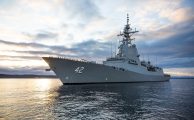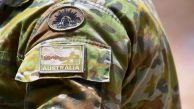
Battle of Nui Le – 4RAR/NZ
The climactic Battle of Nui Le served as the culmination of Australia and New Zealand’s military involvement in South Vietnam during the extended Vietnam War. Taking place in the former Phc Tuy Province as part of Operation Ivanhoe, this intense encounter unfolded between the battle-hardened soldiers of the People’s Army of Vietnam’s 33rd Regiment and the valiant B and D Companies of the 4th Battalion, Royal Australian Regiment/New Zealand Battalion.
By September 1971, Australia found itself deeply entrenched in the Vietnam War, a conflict that had spanned over nine years. The weariness of the unpopular war had permeated the Australian sentiment, reflecting the sentiments of their American allies who were also undergoing a phased withdrawal. The departure from Vietnam was not swift or straightforward, requiring meticulous planning and execution.
Despite the success of Operation Overlord in forcing the enemy to retreat in June, the persistent threat of the Viet Cong and North Vietnamese Army forces loomed large in Phuoc Tuy Province by September. Intent on turning the tide in their favour and capitalizing on the withdrawing Australian forces, the enemy sought to ensnare them in a meticulously orchestrated large-scale ambush, aiming for a propaganda victory.
Patrols by 11 Platoon, D Company 4 RAR/NZ on the morning of September 21, discovered sawn logs near the southeastern part of the Courtenay rubber plantation, suggesting major fortified bunker positions nearby. B and D Company 4 RAR/NZ moved forward near Núi Lé to attack these fortifications.
12 Platoon, D Company 4 RAR/NZ, made first contact with a bunker system containing the security elements of the 33rd Regiment’s headquarters, suffering one dead from an RPG and four wounded. An estimated platoon strength assault attacked 11 Platoon, and after a 15-minute firefight, the PAVN forces withdrew to their bunkers after removing their dead and wounded from the battlefield. 11 and 12 platoons were ordered to withdraw to an area to the south so airstrikes and artillery could be called in to soften up the bunker systems.
Under the control of the Forward Observer, United States Air Force airstrikes were called in, and F-4 Phantoms and A37 Dragonflys bombed the area with napalm, air-to-surface missiles, flechette, and 500-pound bombs. Iroquois and Cobra helicopter gunships and Australian artillery strikes also hit the bunker system. The American pilots reported PAVN forces fleeing to the north. However, this was a deceptive move by the PAVN deliberately sending soldiers running from the scene of an attack to create the misbelief that they had abandoned the fight.
At 14:00, D Company was ordered forward to search and destroy the bunker systems. Unknown to the Australians at that time was that the bunker system was manned by the 33rd Regiment’s 2nd Battalion, and they had not fled after the previous fight as aerial intelligence had reported. The PAVN let the Australians advance some 50 meters into the bunker complex before opening fire, killing three soldiers and wounding two from 11 Platoon. Many grenades thrown by the PAVN did not explode, reducing casualties. This was fought hand to hand as the Centurion tanks of the 1st Armoured Regiment had previously been withdrawn from South Vietnam. 12 Platoon was also pinned down and could not move forward.
The bodies of the three Australian soldiers who had been killed could not be recovered, and orders were given to pull back, which under heavy fire did not happen until 16:00. Just as the sun was setting, the ANZAC forces ran into the second PAVN battalion, with the commander of 11 Platoon, Gary McKay, being hit twice by a sniper’s bullet in the shoulder. It was now pitch black, and the Forward Observer, Captain Greg Gilbert, unable to use his map or compass and unable to speak to the company commander, Major Jerry Taylor, brought artillery fire to within 25 meters of the company under difficult circumstances as more PAVN forces joined the battle. To compound the artillery problem, the company was in range of only three guns, and these were at the limit of their range. The PAVN commander subsequently realized the error of the VC intelligence about there being no artillery, and the PAVN disengaged at 21:00 just as the Australians were running low on ammunition.
After several hours of fighting, the elements of the PAVN 33rd Regiment pulled out of the bunker system and moved north after recovering the dead and wounded they could carry. The Australian wounded were evacuated by helicopter on the morning of September 22. Five Australians had been killed, and 30 were wounded. Total PAVN losses are unknown; however, 14 bodies were found on the battlefield. On the same day at 17:39, the New Zealanders of V Company RNZIR moved up to reinforce D Company in anticipation of an attack. However, the day passed with no enemy attack or activity.
On September 23, D and V companies moved back into the area of the bunkers. V Company began the assault on the PAVN bunker system at 11:05, moving in very short bounds in torrential rainfall through bomb and artillery craters and fallen timber. It was not until 17:25 that they reached the bunkers where they found the bodies of three Australians from 11 Platoon who had been killed in the assault the day before. The PAVN had fully vacated the bunker system. V Company cleared a track to a helicopter winch point, and the New Zealand riflemen shouldered arms and formed an impromptu “guard of honour” in tribute as members of D Company moved forward with litters for the fallen. For his role in the battle, Second Lieutenant Garry McKay, who was badly wounded, received the Military Cross. Captain Gilbert was awarded the Distinguished Service Medal in 2018 for his actions during the battle.
The Australians, aware of the perilous situation, had to summon their resilience once again. The stakes were high, and the Battle of Nui Le became the crucible in which the Australians would confront their adversaries for the last time in Vietnam. Tragically, it also marked the final moments of some of Australia’s finest soldiers, with five paying the ultimate price and 24 others sustaining injuries.
Facing the Australians was the formidable 33rd NVA Regiment, a battle-hardened force determined to make a lasting impression. The stage was set for a showdown that would decide the fate of the region and serve as a poignant testament to the sacrifices made by the Australian and New Zealand forces throughout the prolonged conflict.
The Battle of Nui Le, occurring at the intersection of strategic withdrawal and determined resistance, epitomized the complexities of extricating forces from a protracted conflict. It showcased the resilience of the Australians in the face of adversity and the unwavering commitment to fulfill their duties despite the toll exacted by the protracted conflict. The echoes of this final major engagement reverberated through the annals of military history, marking the end of an era for Australian and New Zealand forces in Vietnam.





The foregoing is quite a good article on the 1971 Battle of Núi Lê . For comprehensive accounts, see: Chamberlain’s “The 33rd Regiment …, Their Story”, 2014 including 21 appendices and maps (including Chamberlain’s post-War interviews in Vietnam with 33rd Regiment cadre); See also the subsequent 2017 book: “The 33rd Regiment … Their History (1965 – 1989), 179 pages – including detailed annexes on SIGINT (with maps). Both books are free-to-read on Scribd. Contrary to some accounts, the 33rd Regiment did not move south into Phuoc Tuy in 1971 to give the soon-to-depart 1 ATF a “bloody nose”, but moved into Phuoc Tuy in September 1971 to avoid further engagements with the US 3rd Brigade in Long Khanh Province (see also the 4RAR/NZ (ANZAC) After Action Report for Operation Ivanhoe dated 4 November 1971). Also, despite some Australian post-War writings neither the 33rd Regiment commander – nor a battalion commander were killed at the Battle of Núi Lê .